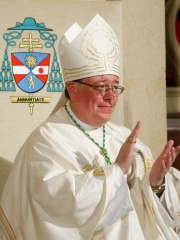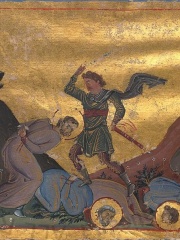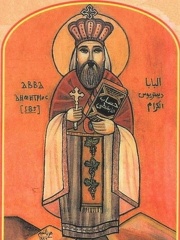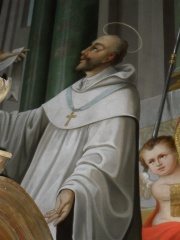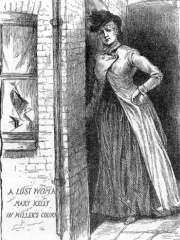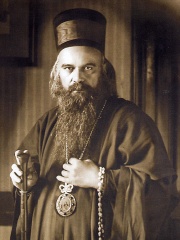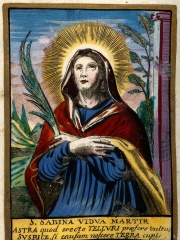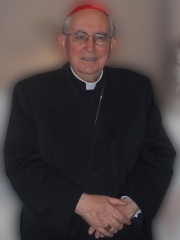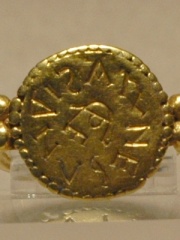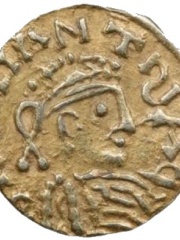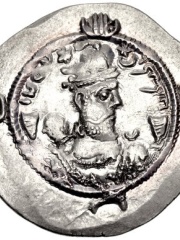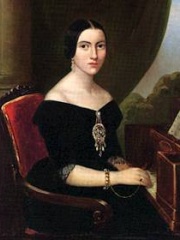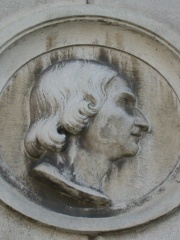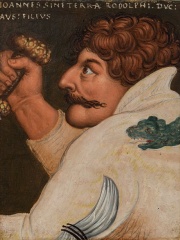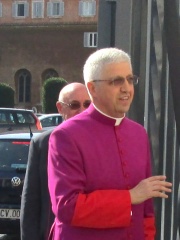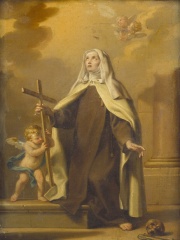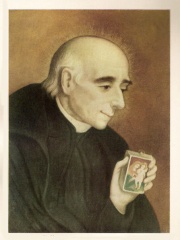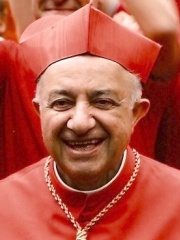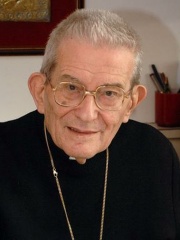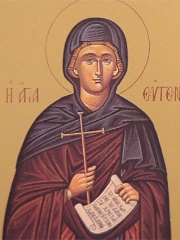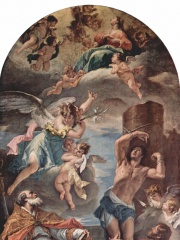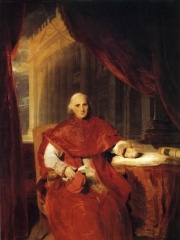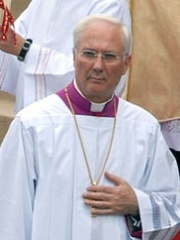Religious Figure
Saint Silvia
515 - 592
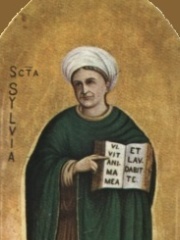
 Saint Silvia
Saint Silvia
Silvia, or Sylvia, (c. 515 – c. 592) was the mother of Gregory the Great. She is venerated as a saint by the Catholic Church and Eastern Orthodox Church, which names her a patroness of pregnant women. Read more on Wikipedia
Her biography is available in 16 different languages on Wikipedia. Saint Silvia is the 1,273rd most popular religious figure (down from 952nd in 2024), the 1,714th most popular biography from Italy (down from 1,378th in 2019) and the 361st most popular Italian Religious Figure.
Memorability Metrics
Page views of Saint Silvia by language
Among Religious Figures
Among religious figures, Saint Silvia ranks 1,273 out of 3,187. Before her are Jean-Claude Hollerich, Franz Jägerstätter, Pamphilus of Caesarea, Pope Demetrius I of Alexandria, Stephen Harding, and Anthimus I of Constantinople. After her are Elisheba, Fulgentius of Ruspe, Mary Jane Kelly, Nikolaj Velimirović, Saint Sabina, and Agostino Vallini.
Most Popular Religious Figures in Wikipedia
Go to all RankingsJean-Claude Hollerich
1958 - Present
HPI: 64.79
Rank: 1,267
Franz Jägerstätter
1907 - 1943
HPI: 64.79
Rank: 1,268
Pamphilus of Caesarea
240 - 309
HPI: 64.79
Rank: 1,269
Pope Demetrius I of Alexandria
200 - 231
HPI: 64.76
Rank: 1,270
Stephen Harding
1059 - 1134
HPI: 64.76
Rank: 1,271
Anthimus I of Constantinople
600 - 660
HPI: 64.76
Rank: 1,272
Saint Silvia
515 - 592
HPI: 64.75
Rank: 1,273
Elisheba
HPI: 64.74
Rank: 1,274
Fulgentius of Ruspe
468 - 533
HPI: 64.74
Rank: 1,275
Mary Jane Kelly
1863 - 1888
HPI: 64.73
Rank: 1,276
Nikolaj Velimirović
1880 - 1956
HPI: 64.70
Rank: 1,277
Saint Sabina
100 - 126
HPI: 64.70
Rank: 1,278
Agostino Vallini
1940 - Present
HPI: 64.69
Rank: 1,279
Contemporaries
Among people born in 515, Saint Silvia ranks 1. After her is Aregund. Among people deceased in 592, Saint Silvia ranks 4. Before her are Guntram, Bahram Chobin, and Emperor Sushun. After her is Faroald I of Spoleto.
Others Born in 515
Go to all RankingsOthers Deceased in 592
Go to all RankingsGuntram
POLITICIAN
532 - 592
HPI: 71.04
Rank: 1
Bahram Chobin
MILITARY PERSONNEL
600 - 592
HPI: 67.87
Rank: 2
Emperor Sushun
POLITICIAN
520 - 592
HPI: 66.16
Rank: 3
Saint Silvia
RELIGIOUS FIGURE
515 - 592
HPI: 64.75
Rank: 4
Faroald I of Spoleto
POLITICIAN
600 - 592
HPI: 58.21
Rank: 5
In Italy
Among people born in Italy, Saint Silvia ranks 1,714 out of 5,161. Before her are Pacuvius (-220), Gallus Anonymus (1010), Giuseppina Strepponi (1815), Gillo Pontecorvo (1919), Catherine of Bologna (1413), and Alberic I of Spoleto (900). After her are Ubertino of Casale (1259), Amadeus III, Count of Savoy (1095), Benvenuto Tisi (1481), John Parricida (1290), Achille Compagnoni (1914), and Luigi Fagioli (1898).
Others born in Italy
Go to all RankingsPacuvius
WRITER
220 BC - 130 BC
HPI: 64.78
Rank: 1,708
Gallus Anonymus
POLITICIAN
1010 - 1145
HPI: 64.77
Rank: 1,709
Giuseppina Strepponi
SINGER
1815 - 1897
HPI: 64.77
Rank: 1,710
Gillo Pontecorvo
FILM DIRECTOR
1919 - 2006
HPI: 64.77
Rank: 1,711
Catherine of Bologna
WRITER
1413 - 1463
HPI: 64.75
Rank: 1,712
Alberic I of Spoleto
POLITICIAN
900 - 924
HPI: 64.75
Rank: 1,713
Saint Silvia
RELIGIOUS FIGURE
515 - 592
HPI: 64.75
Rank: 1,714
Ubertino of Casale
WRITER
1259 - 1330
HPI: 64.74
Rank: 1,715
Amadeus III, Count of Savoy
POLITICIAN
1095 - 1148
HPI: 64.73
Rank: 1,716
Benvenuto Tisi
PAINTER
1481 - 1559
HPI: 64.73
Rank: 1,717
John Parricida
POLITICIAN
1290 - 1313
HPI: 64.72
Rank: 1,718
Achille Compagnoni
MOUNTAINEER
1914 - 2009
HPI: 64.70
Rank: 1,719
Luigi Fagioli
RACING DRIVER
1898 - 1952
HPI: 64.70
Rank: 1,720
Among Religious Figures In Italy
Among religious figures born in Italy, Saint Silvia ranks 361. Before her are Maurizio Malvestiti (1953), Antipope Adalbert (1001), Margaret of Cortona (1247), Vincent Pallotti (1795), Dionigi Tettamanzi (1934), and Roberto Calvi (1920). After her are Saint Sabina (100), Loris Francesco Capovilla (1915), Eugenia of Rome (180), Eusebius of Vercelli (283), Ercole Consalvi (1757), and Piero Marini (1942).
Maurizio Malvestiti
1953 - Present
HPI: 65.05
Rank: 355
Antipope Adalbert
1001 - 1102
HPI: 65.04
Rank: 356
Margaret of Cortona
1247 - 1297
HPI: 65.01
Rank: 357
Vincent Pallotti
1795 - 1850
HPI: 64.97
Rank: 358
Dionigi Tettamanzi
1934 - 2017
HPI: 64.90
Rank: 359
Roberto Calvi
1920 - 1982
HPI: 64.87
Rank: 360
Saint Silvia
515 - 592
HPI: 64.75
Rank: 361
Saint Sabina
100 - 126
HPI: 64.70
Rank: 362
Loris Francesco Capovilla
1915 - 2016
HPI: 64.68
Rank: 363
Eugenia of Rome
180 - 258
HPI: 64.64
Rank: 364
Eusebius of Vercelli
283 - 371
HPI: 64.58
Rank: 365
Ercole Consalvi
1757 - 1824
HPI: 64.57
Rank: 366
Piero Marini
1942 - Present
HPI: 64.48
Rank: 367
